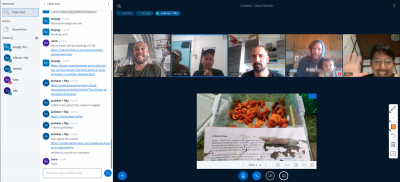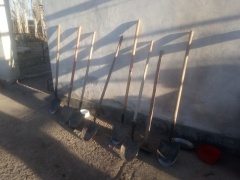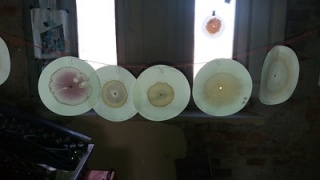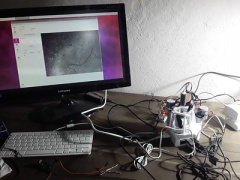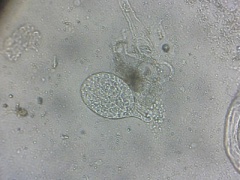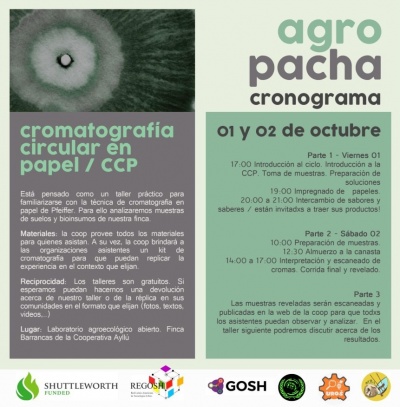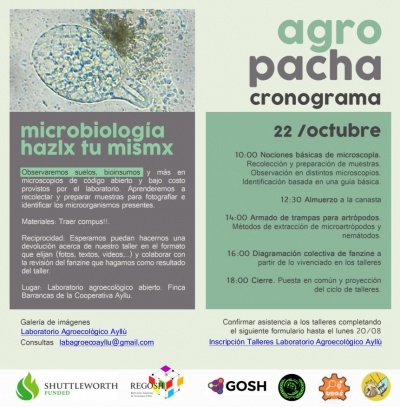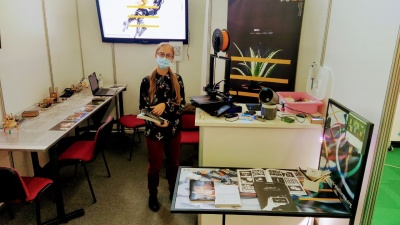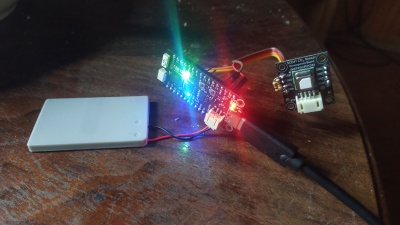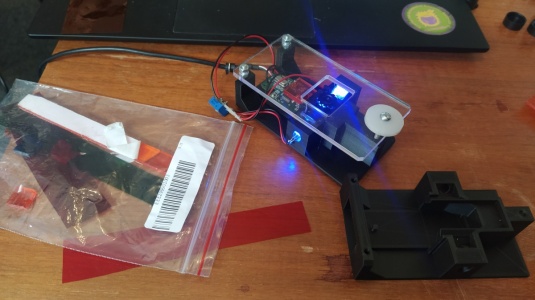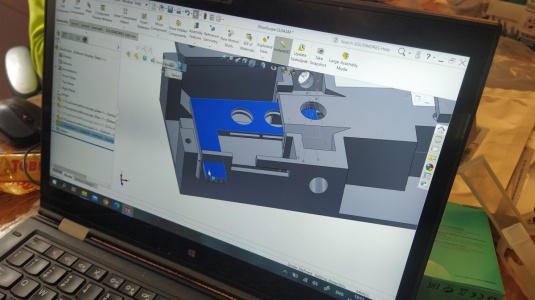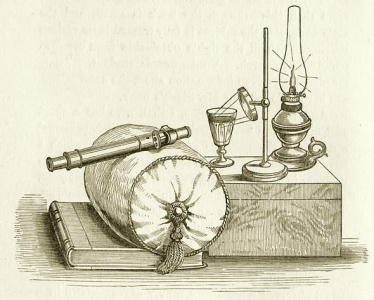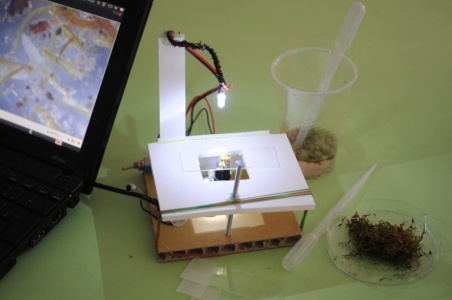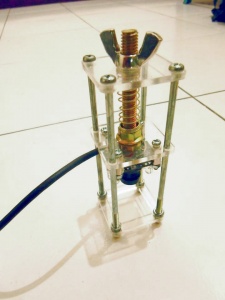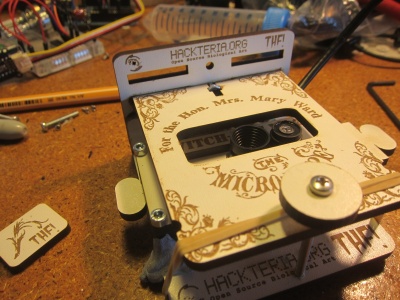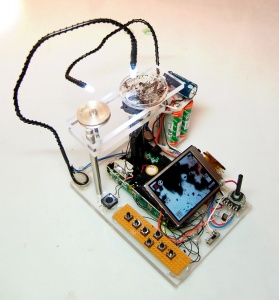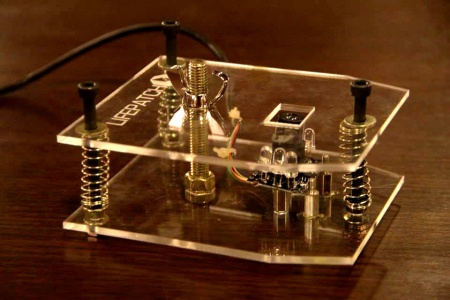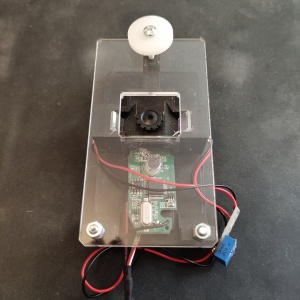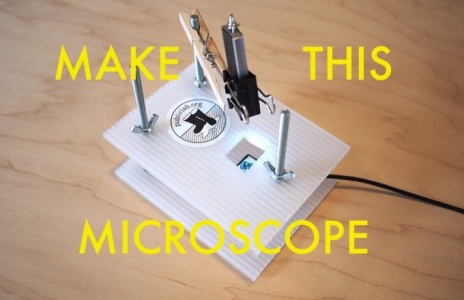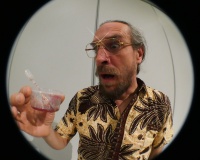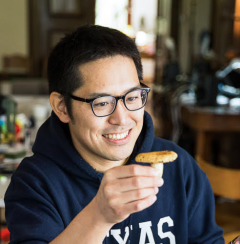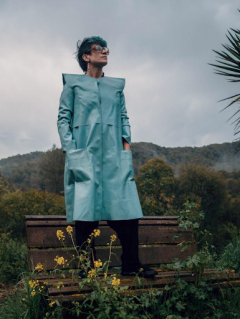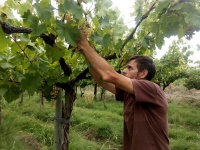Difference between revisions of "UROS"
(→DIY microscope all-stars gallery) |
(→DIY microscopes revisited) |
||
| Line 145: | Line 145: | ||
* comparison to [https://www.en.galagomarket.com//item/display/1948/5579_raspberry-pi_raspberry-pi_raspberry-pi-high-quality-camera,-sc0261 Raspi cam versions], such as [https://build.openflexure.org/openflexure-microscope/test_upright_2/high_res_microscope/prepare_main_body.html openFlexure] and others. | * comparison to [https://www.en.galagomarket.com//item/display/1948/5579_raspberry-pi_raspberry-pi_raspberry-pi-high-quality-camera,-sc0261 Raspi cam versions], such as [https://build.openflexure.org/openflexure-microscope/test_upright_2/high_res_microscope/prepare_main_body.html openFlexure] and others. | ||
* Improving the design of Gaudi's [[Fluorescence Microscope]]. Adding a slide for different optical filters, a lid and a black wall around it. | * Improving the design of Gaudi's [[Fluorescence Microscope]]. Adding a slide for different optical filters, a lid and a black wall around it. | ||
| − | * Organize a collection of many of those designs out there | + | * Organize a collection of many of those designs out there... |
==== DIY microscope all-stars gallery ==== | ==== DIY microscope all-stars gallery ==== | ||
Revision as of 11:28, 13 October 2021
Contents
- 1 UROŠ - Ubiquitous Rural Open Science Hardware
- 1.1 Introduction
- 1.2 Schedule of Activities
- 1.3 UROŠ Temporary Autonomous Lab
- 1.4 Connect and discuss with GOSH community
- 1.5 Research Nodes
- 1.6 People
- 2 Related earlier activities
UROŠ - Ubiquitous Rural Open Science Hardware
We are happy to announce an upcoming series of events and activities to be held starting this autumn 2021 and continued throug-out the upcoming months, globally connected in the Hackteria Network and GOSH community and regionally bringing together some interesting people to collaborate, share, learn, develop in Maribor, Slovenia. Supported and part of konS ≡ Platform for Contemporary Investigative Arts.
Introduction
Global On-site and online collaborations
We regularly meet on Mondays, 15:00 CEST in BigBlueButton: https://www.digitale-gesellschaft.ch/pub/hackteria
Schedule of Activities
Remote Research Projects
Starting August 2021 - Maribor, Slovenia - Zürich, Switzerland - Yogyakarta, Indonesia - Mendoza, Argentina
We have invited collaborators on different parts of the planet earth to remotely collaborate in our research, but in their own local environment. Through-out the phases of UROŠ we are in continous contact using hybdrid / virtual tools to learn together, share experiences and reflect on how different localities and cultural contexts can be used as a source of inspiration and sharpening the appropriate use of our prototpyes and hardware developments.
Local outreach activities
August 2021 - Maribor, Gornja Radgona, Ljubljana, Slovenia - Zagreb, Croatia
UROŠ TAL
5-25 October 2021 - Temporary Autonomous Lab, Maribor, Slovenia - Expeditions in the Region
Reflection on process and learning
Winter 2022 - Globally connected
(To be confirmed) UROŠ Gathering
Spring 2022 - Maribor, Slovenia
UROŠ Temporary Autonomous Lab
5-25 October 2021 - Maribor, Slovenia and regional Expeditions
Calendar
Programme
5 - 10. Okt - Setting up the lab and start geeking
- Design UROS breakout board for CO2 sensor
- Expeditions to test CO2 Soil Respiration Chamber
11- 13. Okt - New Microscopy Developments
- Use of DIY microscope for brewing / yeast counts
- Soil Microscopy - Overview of organisms
- DIY Fluorescence microscope, Gaudi
- Hackteria Microscope 2.0
- Comparisons with openFlexure
- Talk to our global friends on their educational experiences
13-14. Okt - GlobalLAMP Kick-off
- Re-connecting to the GlobalLAMP (Join Telegramgroup here)
- 13:00 - 15:00 Online Meeting UROS-LAMP-kickoff in BigBlueButton
15-18. Okt - Research and Workshops
- Cont. UROS research and global devs
19-25. Okt - Expeditions and Workshops
- Nova Gorica
- Visit Radiona?
- Other Cities in Slo
tba - Retreat
Connect and discuss with GOSH community
Join the discussion on GOSH forum here!
Research Nodes
Remote Research Projekts
Mendoza, Argentina - Open Agroecology Lab
- Who we are
We are Coop Ayllu, a cooperative from Mendoza Argentina working on the agroecological transition of a small vineyard. We produce wine and grape juice. We are urbanites in transition to rural territories and temporalities.
- Open Agroecology Lab
We want to prototype an Open Agroecology Lab inside the coop to develop and test open and low-cost technologies that allow the co-production of knowledge and to systematize the learning of the agroecological transition, based on the dialogue between various actors, their current practices, their visions for the future and the concrete challenges that the transition presents.
Notes on circular chromatography from GOSH shenzhen workshop and art-sci-BLR
Yogyakarta, Indonesia - Aquaculture research project: Aquaponic Urban Farming and Ornamental Fish Farming Integration
The project would like to learn and further develop the method of water engineering in ornamental (Koi) fish farming and integrate it in aquaponic system in urban farming. Koi fish farming has always been regarded as one of the best water engineering in fish farming while aquaponic is arguably the most efficient system in growing food in urban area. By experimenting to integrate both system will allows us to further understand and develop our methodology in urban farming which can also be applied in a wider scope of agriculture.
Koi fish is a very interesting ornamental fish which value could range between a single cent to more than a million dollars. Their value is determined most of all by their variety, “quality” and size. But above all a good quality koi is a healthy koi. A healthy koi fish can only be achieved with good water quality, as the koi farmers said, “we farmers nurture the water, and the water will nurture the fish”.
Koi fish grows healthier in mud ponds, where the ecosystem of mud ponds provide healthy water and nutrients for the fish. However in urban area, less and less areas that can be used for agriculture, in this case mud ponds. Most of the farmers in urban area turns to concrete ponds in their backyard to farm fish as it’s more reliable and convenient in urban area. However to grow fish in this concrete ponds, certain engineering should be done in order for the fish to grow healthy.
There are three essential aspects of water engineering in koi fish farming which is filtration, aeration and circulation. Filtration main function is to allow nitrification process of the pond water, allowing potential toxic ammonia in fish waste to be transform to nontoxic nitrate. Aeration primarily role is to maintain Dissolve Oxygen (DO) in the water for the fish, vegetation and useful bacteria in the pond. Both pond filtration and aeration should be integrated in a healthy water circulation that keeps the water to be healthy for the fish to live in.
After knowing the aspects of growing koi fish, this research project would also like to add the possibility in engineering the water circulation for food farming in aquaponic system. This will allow the efficiency in energy, land area and water usage, in the integration of two farming. So far there are very few examples in integrating ornamental fish in aquaponic farming system. This research project would like to experiment integrating both system in an abandoned concrete pond located in the city, to explore and develop knowledge in urban farming system and share the knowledge from the experiments in this research project.
Regional Outreach - AGRA Fair for Food & Agriculture
Soil Respiration CO2 measurements
We are working on a new version of the Soil Respiration chambers using the Sensirion SCD41 and featherS2. See more on CO2 Soil Respiration Chamber#UROŠ new CO2 soil chambers
Based on FeatherS2 and new SCD41 Sensor sponsored by Sensirion.
DIY microscopes revisited
- Revisiting some of our Hackteria microscope designs, improved cameras (sony IMX335) or C270, which allow manual shutter and control of the on-board LED.
- 3D printed stages in solidwords and started to do a version in openscad.
- comparison to Raspi cam versions, such as openFlexure and others.
- Improving the design of Gaudi's Fluorescence Microscope. Adding a slide for different optical filters, a lid and a black wall around it.
- Organize a collection of many of those designs out there...
DIY microscope all-stars gallery
Soil Microscopy - Workshopology
GlobalLAMP and potatoes
- Minor improvements to the GMO detector fluorescence reader
- 3D printed version?
- Re-connecting to the GlobalLAMP (Join Telegramgroup here)
- 13:00 - 15:00 Online Meeting UROS-LAMP-kickoff in BigBlueButton
People
Marc Dusseiller aka dusjagr (Switzerland)
Marc Dusseiller aka dusjagr is a nomadic researcher and workshopologist and works in an integral way, combining science, art and education. He is part of the Center for Alternative Coconut Research and the Swiss Mechatronic Art Society (SGMK), co-founder of the global Hackteria network and co-organizer of the different editions of HackteriaLab 2010 - 2014 in Zürich, Romainmotier, Bangalore and Yogyakarta. Before travelling the world for making DIY / DIWO laboratories for creative biological experimentation with living media, Marc entered the world of DIY electronics, designing printed circuit boards for synthesizers and organizing workshops and festivals in Switzerland and Slovenia. He lives and works in Zürich, Yogyakarta and Taipei. He also loves coconuts.
Masato Takemura aka Take (Japan)
Masato Takemura. Managing FabLab in Hamamatsu-city, Japan since 2014. Has collaboration workshop with local government and school. Teaching soldering, programming, 3D-printing, 3D-modeling.Also helping for setting up a new FabLab in Hamamatsu science museum and Rwanda. He is trying to add a bio experimental facilities in the labs for education.
Developed some agricultural tools because his FabLab is located in agricultural area and have relationship with farmer. Field monitoring system by drone, Auto steering system for tractor, Sampling machine of bacteria on the crops, Weeding robot in the rice field. Together with dusjagr and friends, Take has initiated a series of fab-and-food related experiments under the name HTEAA "How To Eat (Almost) Anything", which has been performed in Seoul, Tokyo, Taipei, Boston, Santiago de Chile, Shenzhen and other parts of the world. As a next project, Now trying to grow mushroom for 2 years but never succeeded….
Paula Pin (Spain)
Paula Pin (Lugo/Spain, 1982), is a researcher and artist activist which has a strong inclination towards research and experimentation processes with collective and free technologies.
She has undertaken residencies at institutions such as CERN, Université Pierre et Marie Curie, Art school KASK in Gent, Prototyp_ome at Hangar Barcelona, Gaité Lyrique in París, Querly Ecologies at Click Festival and GOSH - Gathering for Open Science Hardware in Shenzhen, China. Although her work emerges from within a scientific tradition of research and experimentation, running throughout drawing to abstract video, circuit bending and lab experiments but always located in the intersection where biology, science and queer art collide. Her active participation at Pechblenda Lab and Transnoise laboratories besides her social ideals and the work as a noise performer, has taken her to many spaces and contexts, specially to the point of starting to collaborate in Hackteria, a global biohacking network. Pin had opportunities to give workshops as a facilitator all around the world, always putting the focus on spreading knowledge and sharing experiences on transfeminist horizontal perspectives.
Andreas Siagian aka ucok (Indonesia)
Andreas Siagian is an artist-engineer working on a wide range of practice in DIY electronics and interdisciplinary art. He studied civil engineering but since 2004, he was actively involved in the electronic music and experimental music scene as organizer and facilitator. In 2008, he started to make installations, developing workshops, and participating in art and science events as well sometimes performing in experimental music events. He co-founded Lifepatch—a citizen initiative in art, science and technology in 2012, where he is still active with the other members in developing workshops, artworks, and participating in and organising public programs. In 2014, he was the co-director of Hackterialab 2014—Yogyakarta, a two week hacklab program of interdisciplinary collaboration organised by Hackteria and Lifepatch.
His solo practice brought his interest in DIY electronics and instrument making to The Instrument Builders Project in 2013 (in Yogyakarta) and 2015 (in the National Gallery of Victoria, Melbourne). He collaborated with Wukir Suryadi to create senjatajahanam, two instruments that were performed in the opening of Jogja Biennale 2015. In 2016, he was the visual artist for Senyawa's solo concert in Jakarta, Indonesia, and in 2018, he was the co-director of Biocamp Tokyo, artistic director of Indonesia Netaudio Festival, co-host of the Hacklab Nusasonic in Yogyakarta and CTM festival in Berlin, also facilitator of Arisan Tenggara and part of the creative board of Cultural Festival Yogyakarta in 2018.
Fernando “Nano” Castro (Argentina)
Fernando “Nano” Castro is a digital artisan from Mendoza (Argentina) working at the interface between scientific/tech communities and local communities that need to improve production practices or monitor the environment. Partner of Coop Ayllú, a cooperative that manages a small farm to produce food and beverages. Nano has given several open source scientific tools workshops as a facilitator in Chile and Argentina. Currently working on establishing an Open Agroecology Lab for soil and food research. Member of Latam network of free scientific technologies reGOSH.
Counselors
Fiky & Dina | Kunci (Indonesia)
Greg Austic | our-sci (USA)
Nur Akbar Arofatullah | ? (Indonesia)
Urs Gaudenz | GaudiLabs (Switzerland
Julian Chollet | Mikrobiomik (Germany)
Fran Quero | CRI (Spain/France)
Matej | KryptoEvangelist (Slovenia)
Related earlier activities
GOSH - Gathering for Open Science Hardware
From microscopes to microfluidics and water quality test equipment, hardware is a vital part of science. Advances in instrumentation have been central to scientific revolutions and access to hardware shapes the work of communities conducting research globally on a daily basis. However, the current supply chain for science hardware limits access for many groups of people and impedes creativity and customisation. Open Science Hardware (OScH) means sharing designs for scientific hardware openly online that anyone is freely able to use, modify and even commercialize. This approach could drastically reduce the costs of research while enabling people to collaborate and learn in new ways.
The Global Open Science Hardware community supports OScH by convening meetings such as the Gathering for Open Science Hardware (GOSH), publications, activities and providing a forum for the community.
See more on GOSH website and join the forum to discuss!
Together we will make Open Science Hardware ubiquitous by 2025 and build new futures for science.
GOSH 2018 Shenzhen
HUMUS sapiens - Open Soil Research
Klöntal Biohack Retreat - Switzerland 2017 and HUMUS.Sapiens
Klöntal Biohack Retreat - Switzerland 2017 - 5 days of Biohacking and Art im Klöntal - The artist Maya Minder, in collaboration with Hackteria.org, invited people from the international Biohackerscene to stay in the Klöntal. Natural scientists, hackers and artists meet for the development of ideas and open exchange.
Also known as HackteriaLab 2017 - Klöntal, which then lead to a series of events in the Region of Switzerland and Southern Germany under the umbrella of HUMUS sapiens, starting in Sring 2018 and still kicking...
«HUMUS sapiens» represents a compilation of soil explorations emerging from the networks of
We bring DIY (do it yourself) and DIWO (do it with others) approaches as well as an open source based ‘hacker spirit’ into soil ecology. We invite you to reflect on current scientific discourses and critical societal challenges through hands-on tinkering and curiosity driven research.
We are building a network of soil enthusiasts for long-term collaborative research and invite YOU to join us. Read more on Mikrobiomik

